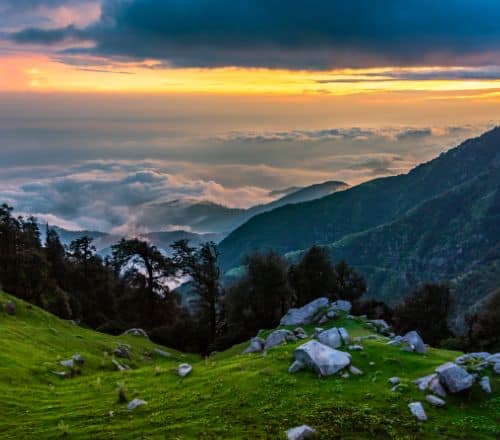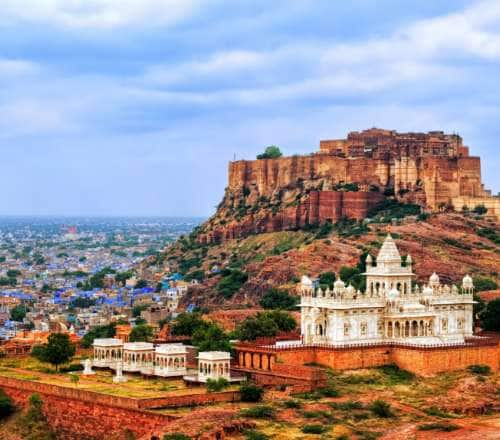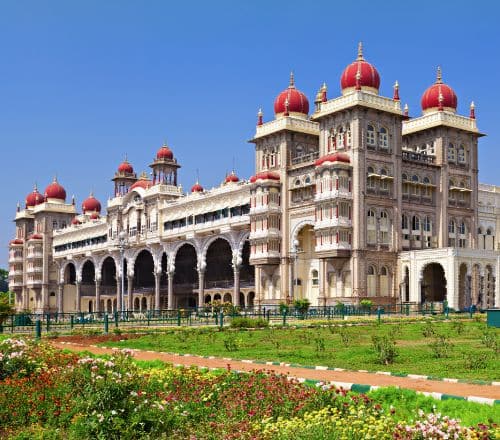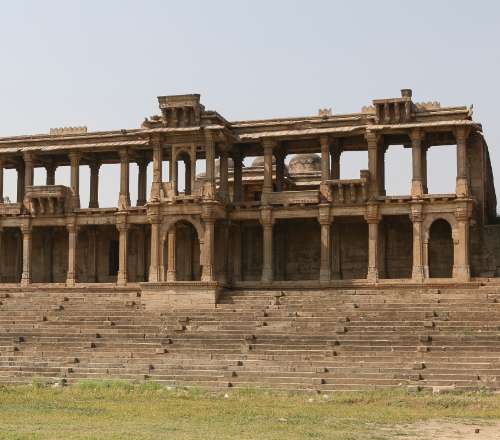Stay logged in to proceed with bookings, orders and offers.
On changing the terminal, you will loose items in your cart. Are you sure you want to change your terminal?
Surrounded by majestic forts and royal palaces, Udaipur is a city of pristine lakes. It is a dream destination for weddings.
A wedding is a celebration of love and a dream come true! Everyone dreams of a perfect wedding at a perfect venue. In India, we love weddings, happy endings, and picture-perfect settings. The city of Udaipur offers all three and much more. Located in the desert state of Rajasthan, Udaipur is known as the 'city of lakes'. It is among the top destination wedding venues in the country.
I have seen a host of regal wedding portraits with the bride and groom dressed in royal attire, posing against the backdrop of a majestic fort. The bride walking on a red carpet while being showered with rose petals is every groom’s dream. This dream comes true in Udaipur.
I had read a lot about destination weddings in Udaipur but had never been a part of one. The beautiful pictures on Instagram and glossy magazines showcased a magical and fairytale setting. I have often wondered how weddings of this magnitude were organised in a small city like Udaipur.
I got my answer earlier this year when I was invited to a destination wedding in Udaipur. A former college mate, who currently resides in Dubai, UAE, was getting married to his long-time Turkish girlfriend. The families had picked Udaipur as the wedding venue.
I was pretty excited about the prospect of experiencing a destination wedding in India. The wedding was slotted for October and spread over three days, with a host of ceremonies and functions before the grand nuptials. I was fortunate enough to be one of the 150 or so guests at the wedding. My flight from Delhi to Udaipur was a 90-minute journey. When I landed in Udaipur, the hosts had organised a bus to take us to the resort.
However, I was in for a surprise when we were dropped off at a jetty instead of the resort. The organisers informed me that the next leg of the journey would be by boat. Now that’s some adventurous luxury to get to a wedding! The water in the lake was calm, and the cool breeze was refreshing. The boat ride took about 30 minutes to reach the venue.
The welcome at the entrance of the resort had another hint of royalty. A band of folk musicians were singing traditional Mewari songs, while a host of attendants were showering rose petals on me. If that wasn’t enough to make me feel like a royal, I was welcomed with a tilak to my forehead.
I received a welcome stole as well. I wrapped up the formalities and checked into my room, where a foot massage service was waiting for me. I grabbed the welcome drink and enjoyed the 20-minute therapy. Now that’s what I call a royal welcome—a blend of culture, tradition, and luxury.
The wedding was planned over the long weekend. This meant three days of rituals, traditions, and a lot of singing and dancing. A group of folk musicians and dancers were deployed for the entertainment of the guests. The meals were organised as a buffet, with Indian, Chinese, and Continental dishes on the menu. Right after dinner, I was escorted to an open courtyard with floor seating, bolsters, and large, comfortable pillows. This was going to be the entertainment for the evening.
Two dancers in flowing black skirts and blouses adorned with embroidery and tiny mirrors danced to the folk instrumental music. This dance form is indigenous to the Kalbeliya tribe, which was primarily comprised of snake charmers. Another set of performers danced to the ghoomar, which is also a traditional Rajasthani dance form. The performers pulled a few guests to the dance floor and made them groove to the music.
I was also pulled in and shown how to shake my hips to the tribal music. For the haldi and mehendi functions, the entertainers organised a Katputli show, which is a traditional puppet dance. Tales of romance and chivalry were narrated by the puppeteer, while figurines made of cloth and cardboard were used to portray the stories. The ceremony was organised in an open courtyard with a yellow and golden shamiana overlooking Pichola Lake.
Honestly, the three-day functions made me feel like I was in a Yash Raj Bollywood film. After the traditional haldi and mehendi were applied, the bride’s friends pulled her onto the dance floor. I joined the chorus of whistles and applause as the bride displayed her belly dancing moves. As the sun set and the evening took over, a series of lamps and lights lit up the courtyard and the resort. Bathed in yellow light, the black and white tiled courtyard glittered like gold. No camera can do justice to the beauty of this place. It has to be seen with your own eyes!
The next morning, I decided to explore the city. There are several jetties around the lakes in Udaipur. Each place has a variety of boat rides available. You can hire them for 30 minutes to an hour to enjoy the lake or even cross over to the other side. I hired a smaller boat to take me around the lake. It was a leisurely cruise that took an hour.
I was able to identify several palaces and structures I had seen in an older James Bond movie. The Jagmandir Island Palace and the Lake Palace were the two structures I identified immediately. These are built on two islands in the middle of Lake Pichola. One of them housed an exiled Mughal prince! The Lake Palace was known as Jag Niwas and served as a summer residence for the royal family.
I could understand why the royals built this palace in the middle of a lake. The entire structure is made of white marble. This, combined with the cool breeze from the lake would have made the palaces much cooler than those on the land. The Lake Palace is currently operated as a five-star resort by the Taj Group.
The Jagmandir Island Palace has a rich history. The Mughal Emperor Shahjahan lived in this palace. In 1622, Shahjahan revolted against his father, the Mughal Emperor Jahangir. Shahjahan’s attempt was thwarted and he was sent into exile. It was during this period that the prince sought refuge in Udaipur. As Shahjahan was born to a Rajput mother, Maharana Karan Singh of Mewar offered him help during this tumultuous time.
As the boat approached the Jagmandir palace, I saw a series of white elephant statues, with their trunks raised, on the landing dock. The Rana had constructed the Gol Mahal, incorporating Mughal architecture in a Rajput palace. This is a unique marriage of Mewari culture with Islamic art.
The Mughal prince, along with his wife and children, lived in this palace from 1623 to 1624. As I walked through the palace courtyard, it felt surreal. I was walking in the footsteps of the greatest Mughal visionary, Shahjahan. This was the man who built the magnificent Taj Mahal! The inner walls of the palace and the courtyard had a distinct work called pieta dura, which is a kind of inlaid stone artwork. Shahjahan has used this art form extensively in the structures he had commissioned, including the Taj Mahal.
Did you know?
The pietra dura is a Florentine art form also known as Parchin Kaari. The art uses an inlay technique of using cut pieces of polished stones to create artwork or images on a larger stone slab. The finest examples of this art can be seen on the walls of the Taj Mahal in Agra.
After my boat ride, I decided to pay a visit to the museum. Here, I was able to see a collection of miniature paintings that form the largest collection of Mewar art in the world. There are approximately 8,000 paintings here.
According to legends, Shahjahan presented his pagdi (headgear) to Maharana Karan Singh to signify a brotherly bond. The Mughal prince was indebted to the Rajput king for his help. This pagdi is one of the prized possessions on display at the city museum.
Other interesting items I saw here include a variety of ancient weapons, clothing, and exquisitely carved pieces of ivory. Just a walk through the galleries of the museum allowed me to feel the grandeur of the lives of royals in Mewar. This made me want to live here as a member of the Mewar royal family during those glorious days.
Did you know?
In earlier times, a pagdi was considered to be a symbol of a man's dignity and a prized possession.
How Do I Get to Udaipur?
Udaipur is a well-connected city. The airport is around 22 km from the city. The railway station is a busy junction with trains coming in from all parts of the country. While travelling within the city, the best mode of transportation is a rickshaw or a cab. Radio cabs are functional in the city but do not operate as freely as the local taxis.
The Best Time to Visit
The best time to visit Udaipur is between September and March when the temperature is cooler. The summers in Rajasthan can be quite testing.
Did you know?
A James Bond film titled Octopussy (1983) was shot in several locations in Udaipur, including the Jagmandir Island Palace, the Lake Palace, Shiv Niwas Palace, and the Monsoon Palace.





The Adani One expressly disclaims all liability, direct and indirect, in respect to actions taken or not taken based on any or all the contents of this Blog. The Blog is an opinion of the contributor based on the collation of data from various sources and is provided only for information purpose. Adani One does not canvass, advertise, solicit, invite or induct for any product, merchandise, information, brand or any other materials mentioned in the Blog, nor does it obtain any monetary benefit from the same. Reader is advised to read and apply his/her intellect and discretion in this regard. Any Intellectual Property mentioned in this blog belongs to the rightful owner. We do not intent to claim any interest over the same.